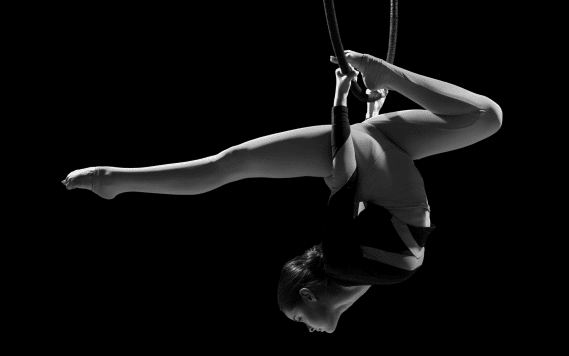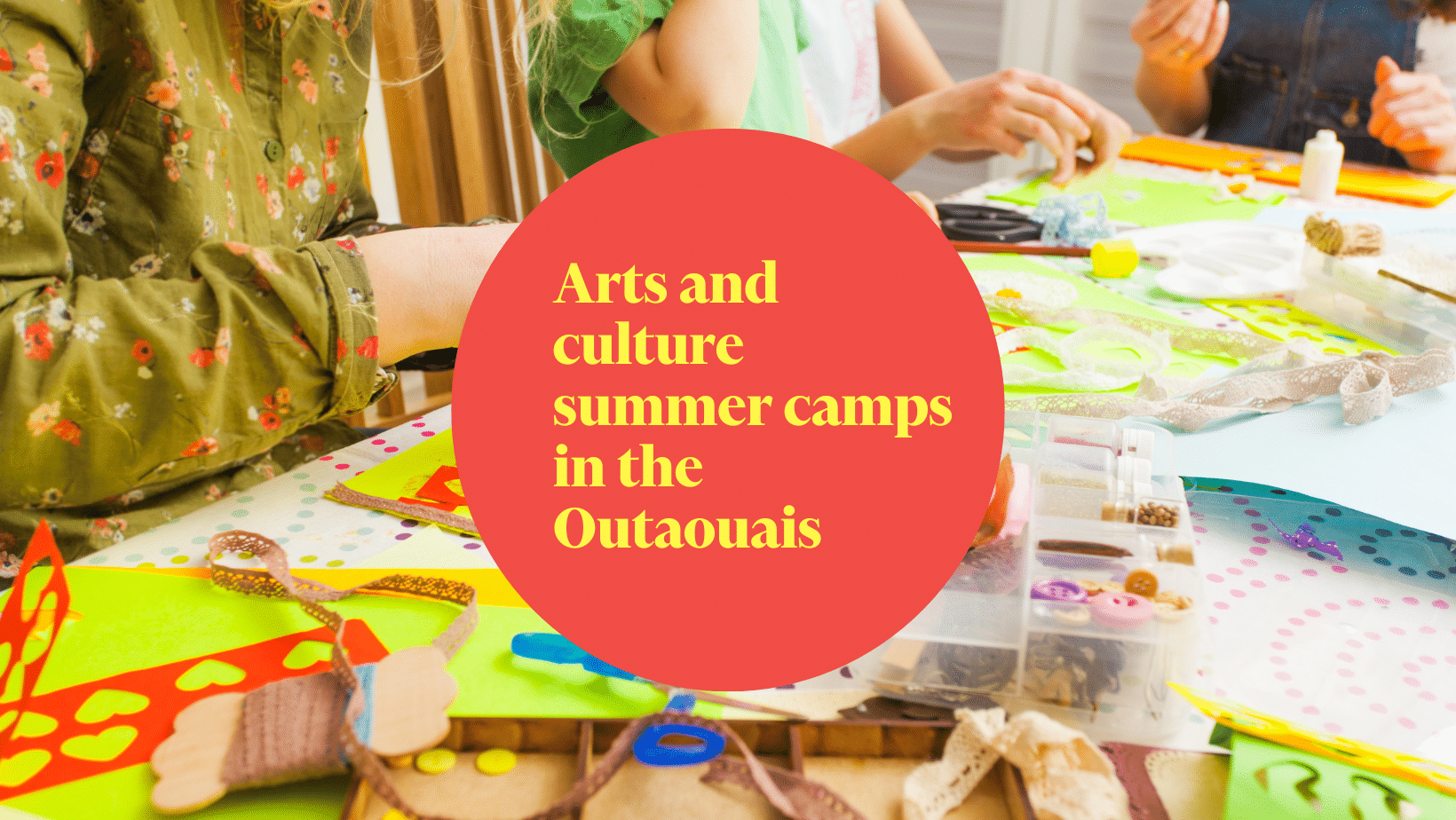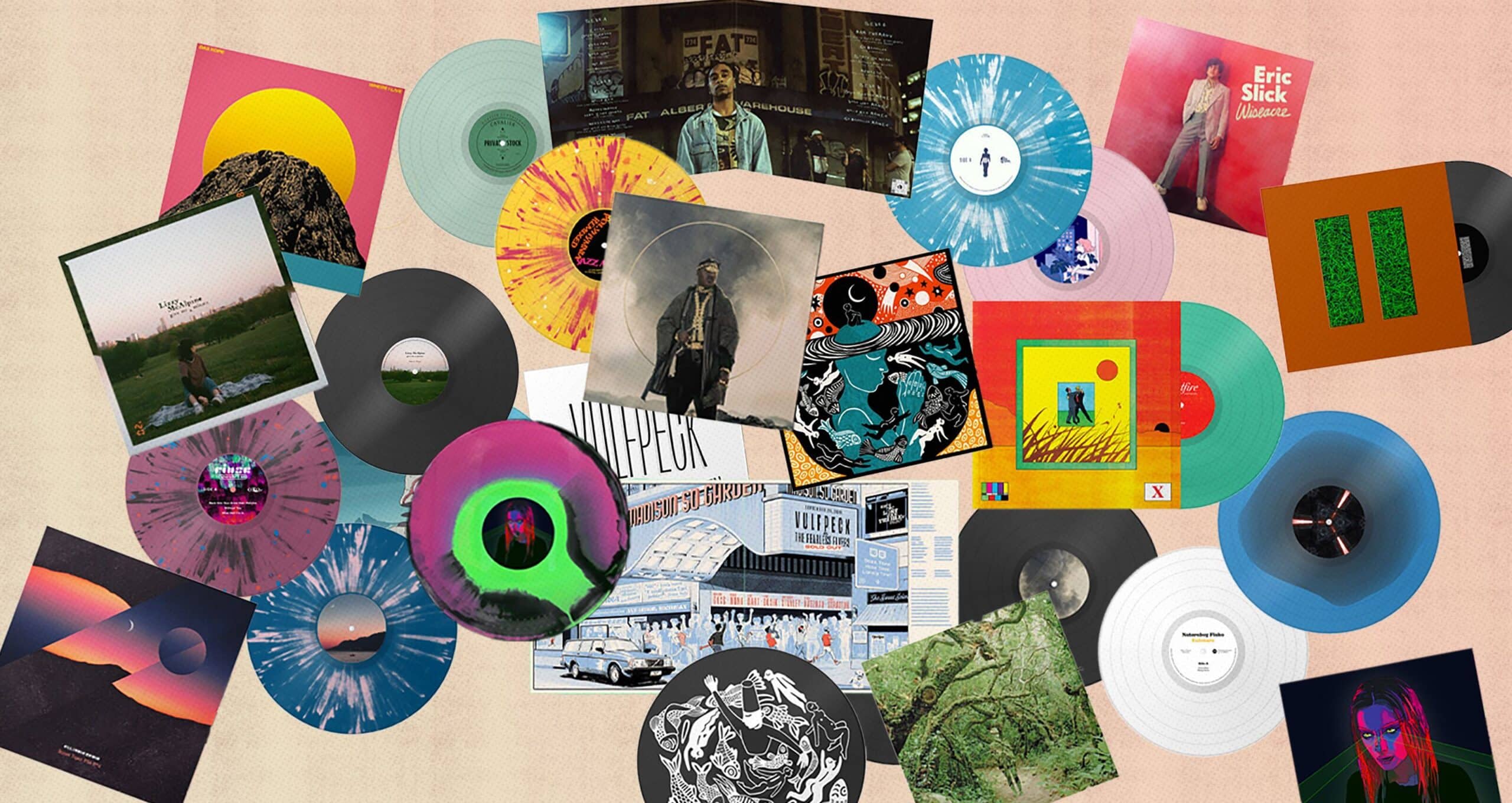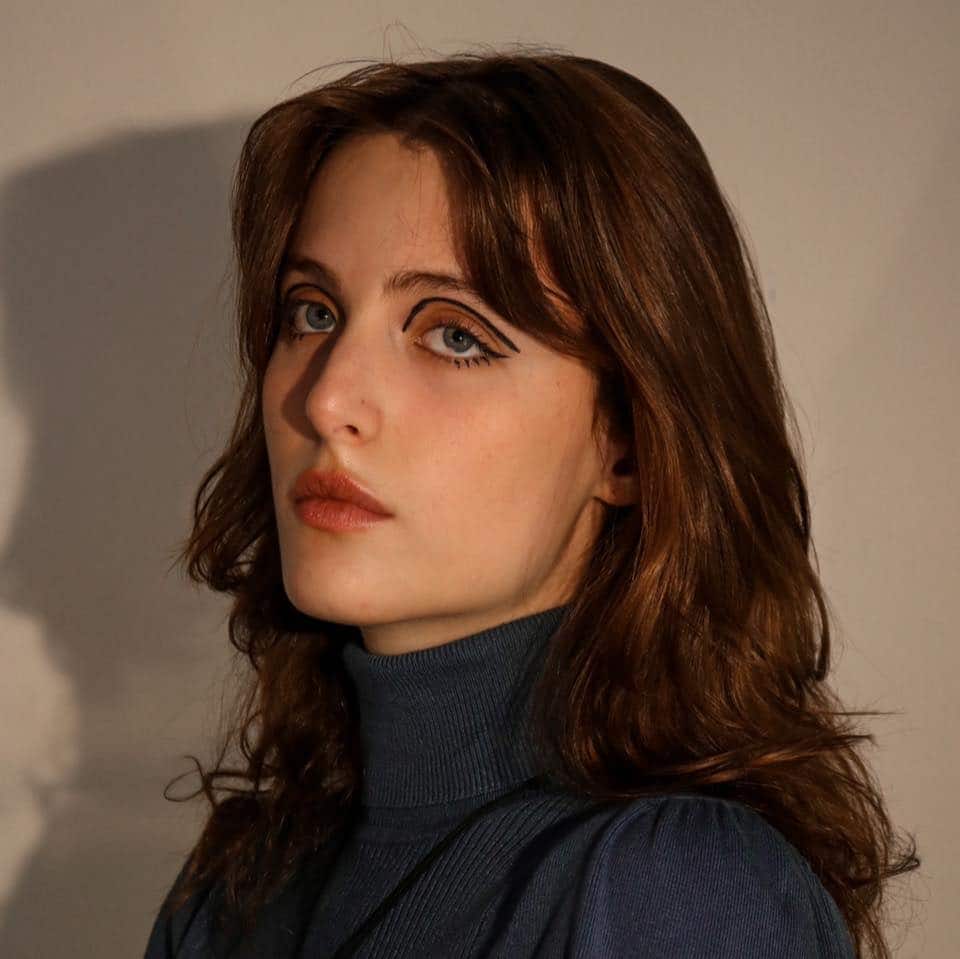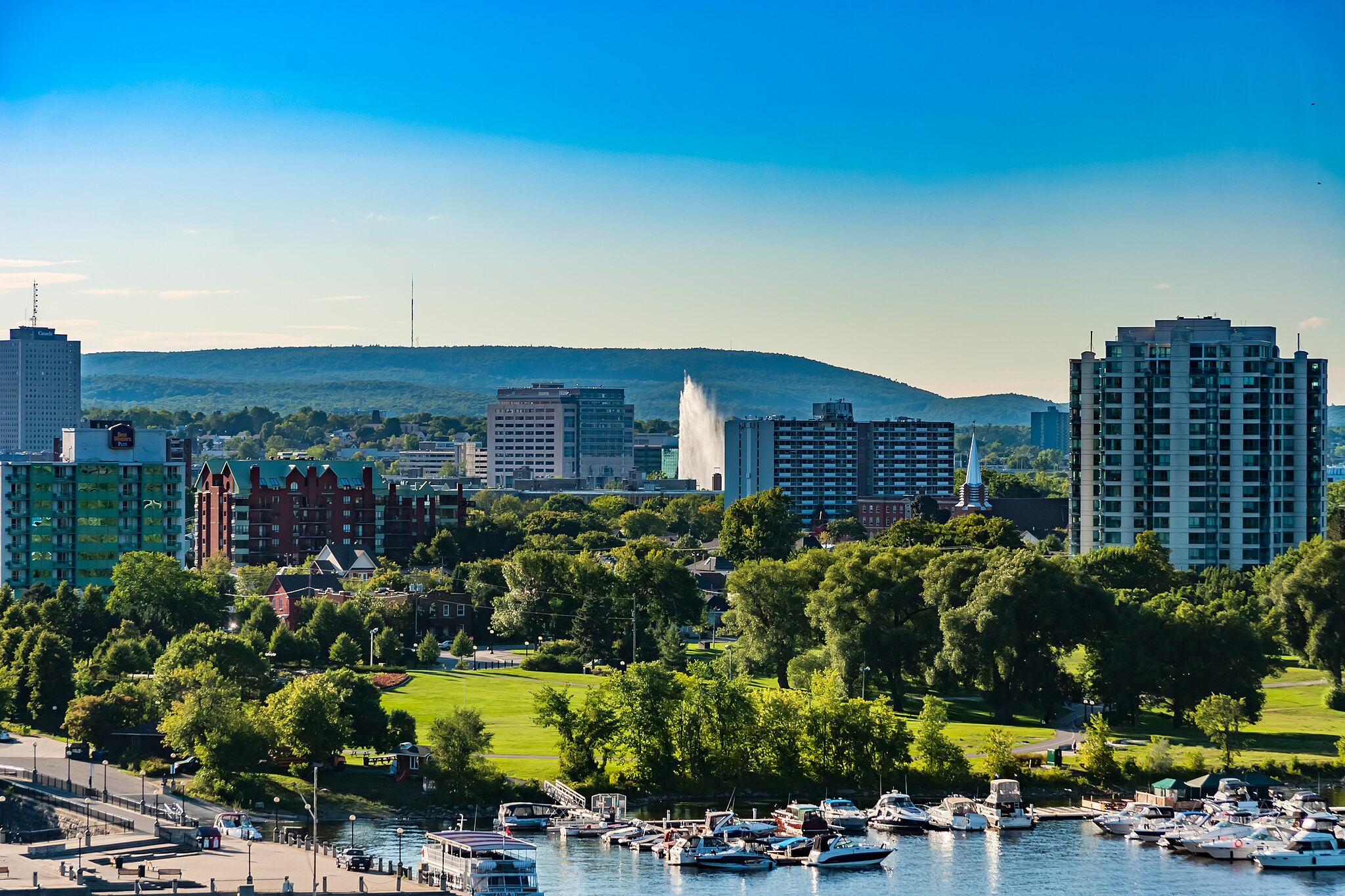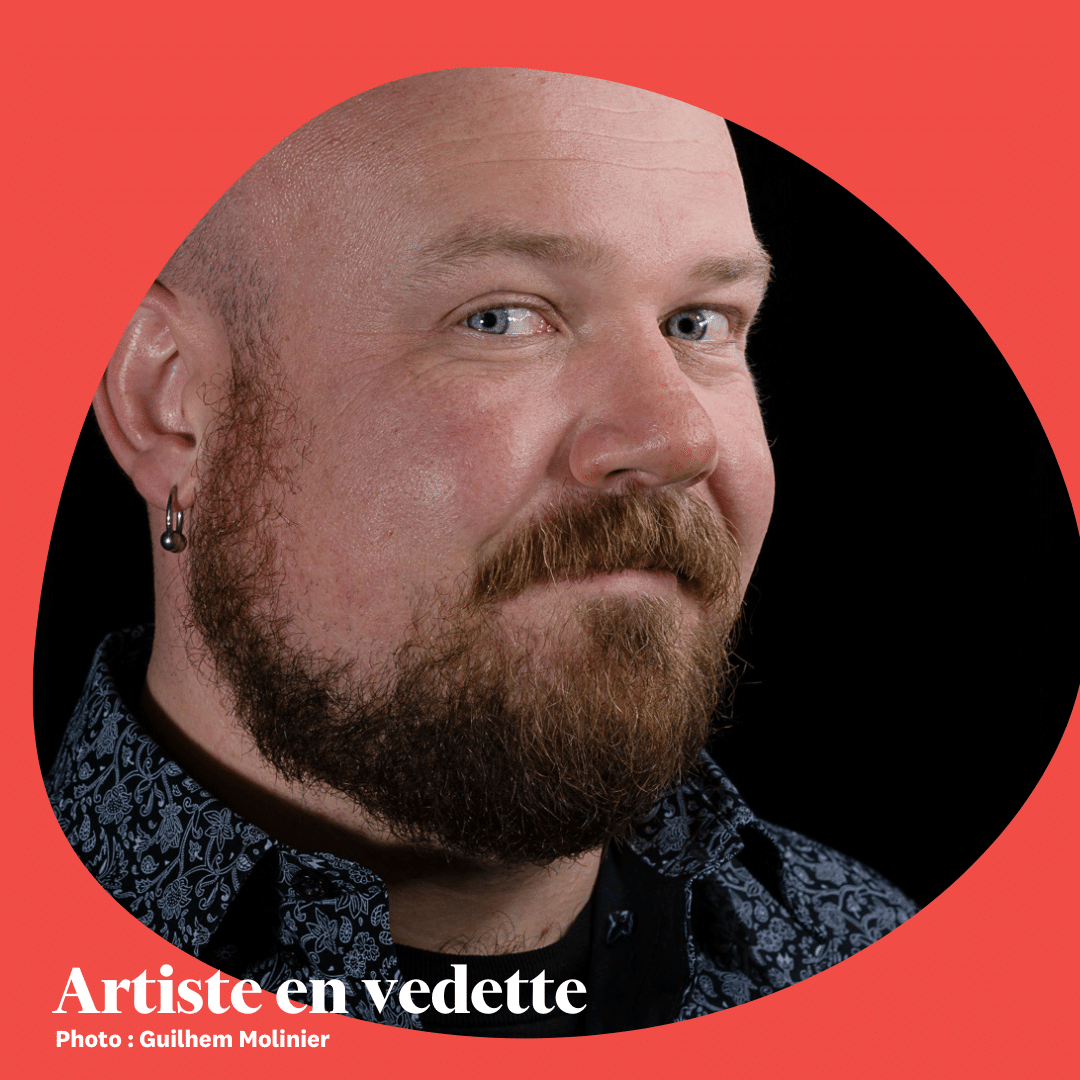
We can feel a breath of fresh air, a sustained momentum, supporting the visual arts ecosystem in the Outaouais and Benjamin Rodger is elated. As a visual artist himself, he’s learned to wear many hats within the arts and culture community, including as teacher at the arts department at the Cégep de l’Outaouais and the president of the artist studio cooperative Les Ateliers du Ruisseau. After completing his studies outside the Outaouais region, notably at Concordia University in Montreal and in France at the National School of Fine Arts at the Villa Arson in Nice, he came back to Gatineau in 2009 to set up his practice.
With over a dozen solo exhibitions under his belt as well as close to thirty collective exhibitions here and elsewhere, his work is also contained in multiple permanent collections, including the City of Ottawa’s. Represented by the influential St-Laurent + Hill Gallery in Ottawa, his style has evolved throughout the years culminating in a distinct visual signature that combines a vivid colour palette with oversized shapes. Parallel to his artistic career, he’s occupied the role of president of a fledgling cooperative that aims to construct a new building dedicated to the visual arts that will be located on Morin Street in downtown Gatineau. This building would represent the most important cultural project for Gatineau in over 30 years, responding to the desperate needs of visual artists in the Outaouais. This project recently received the official support from the City of Gatineau Council, along with financing to the tune of close to 35 million dollars. We can confidently say the project has never been closer to achieving its objective: to create 45 individual artist studios as well as a new gallery space for the municipal Galerie Montcalm and storage for the city’s permanent collection.
We spoke with Rodger to discuss this historic achievement, explore his artistic trajectory, and delve into the cultural ecosystem in the Outaouais.
How do you feel the artistic scene has changed in the Outaouais since your return in 2009?
I believe that the changes aren’t linear but have manifested in multiple waves of successive projects that have contributed to the evolution of the visual arts scene, granted many of these initiatives no longer exist. I’m thinking notably of the performance events organized by Fait Maison, of the artist studios at Le Temporaire and L’Entre-Deux and their respective cultural programming and the visual arts component of the now defunct Festival de l’Outaouais émergent. However, I feel that we’re currently witnessing an encouraging mobilisation within the field, including the birth or advancement of many important projects. The artist and cultural worker housing cooperative, the renovation of Building 9, the extension of La Filature, and of course the Ateliers du Ruisseau, are all key projects for the region. I feel like the city is playing a pivotal role in advancing these projects, as well as other initiatives like the Culture Trail and the Place Laval.
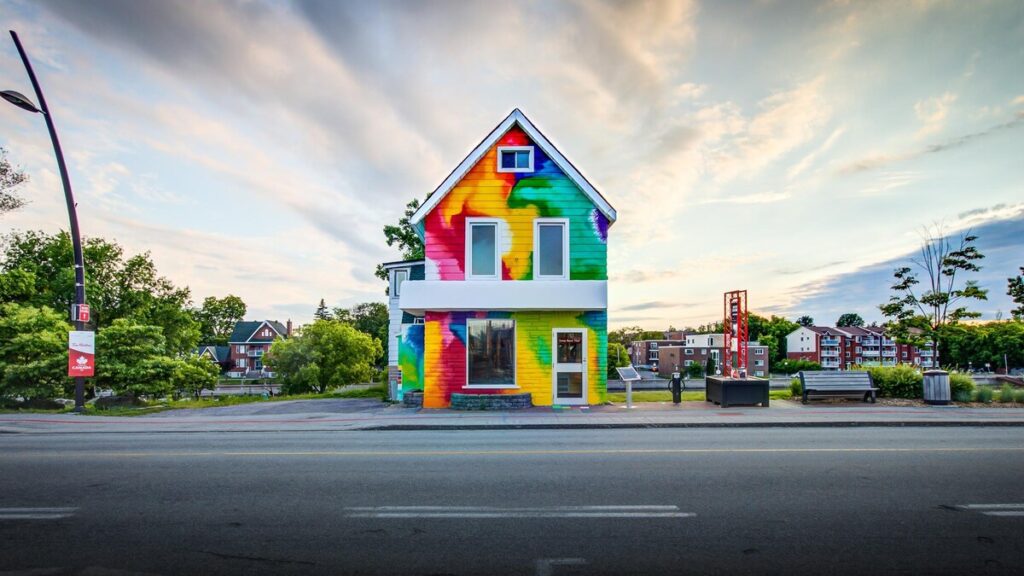
L’Entre-Deux, a building that housed temporary artist studios that recently shut down. Photo: Charles Regimbal.
Do you believe it necessary to move to a metropolis like Montreal to be a working artist?
If I believed that to be the case, I would not be here! Obviously living in a metropolis offers many advantages, including a larger variety of galleries, easier access to spaces to create, and the proximity of other artists and support networks. I know of many artists who live and work in Gatineau but exhibit elsewhere. We also have the advantage of being beside Ottawa, very close to Montreal and not that far from Toronto (where close to a quarter of all artists live!) meaning we are far from isolated. It might have been the case in the past, but the advent of the internet has really changed that reality. In the last year alone, I have had the opportunity to work for the Ontario Arts Council, based in Toronto, and have given conferences to groups of artists located across Quebec, without ever having to leave my home.
How does your work as teacher inform your artistic practice?
I often say, with a bit of a laugh, that now that I am now myself a teacher, I finally understand what my own teachers were trying to tell me as a student. Being a teacher, if I want to accurately convey technical, historical, or conceptual notions, I must not only constantly revise and update my own knowledge, but I must also keep abreast of what is currently going on in the field of contemporary arts to make sure what I teach is pertinent. I believe that my role as teacher allows me to keep learning. I’ve been at the Cégep de l’Outaouais for eight years and so many of my former students now hold bachelors or masters and are active contributors to the local artistic scene, which I love to see. Being a teacher allows me to continually invest in my artistic community and vice versa.
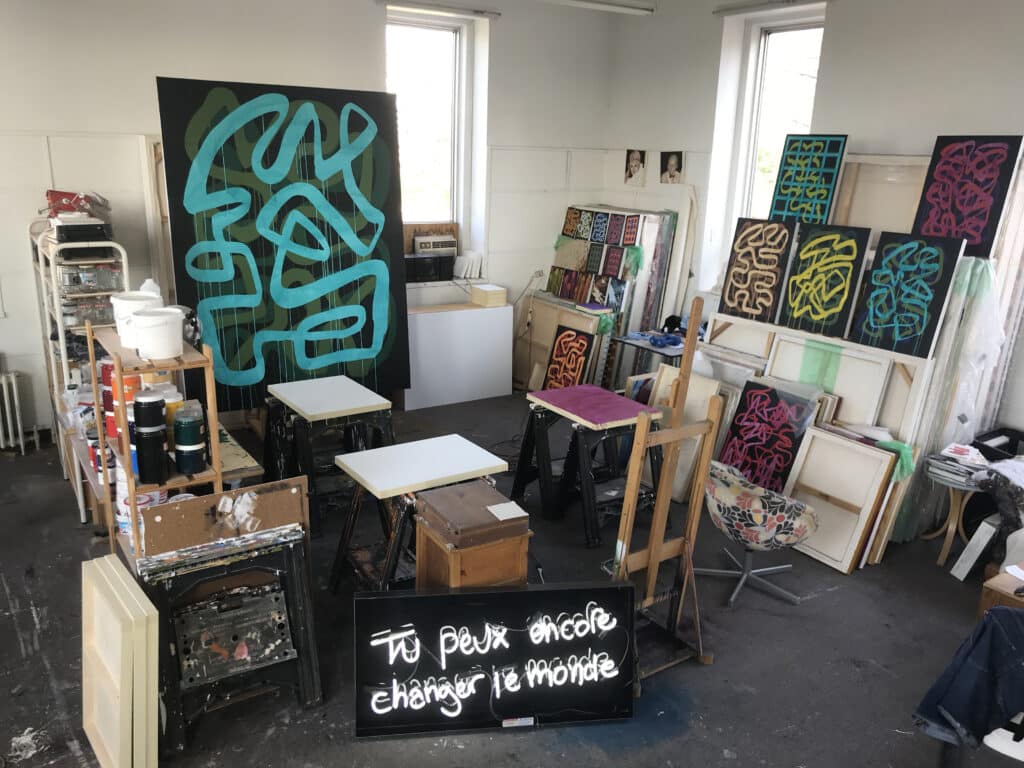
A look into the artist’s studio. Photo: courtesy of the artist.
You’ve developed a striking visual signature, how has it evolved throughout the years?
Indeed, while my practice has changed throughout the years, like going from modern-figurative to a more abstractive style, I’ve continuously explored some of the same formal aspects resulting in a visual signature that has become quite recognizable. I’m interested in the dichotomy between form and substance, colour theory and the manipulation of matter. Certain aspects of my process have a recurring theme: the motifs, lines and spots are drawn meticulously but then divided by tape and painted over with a roller. However, my subject matter is often very diverse. As an example, my series J’ai vu l’homme invisible, mais lui ne m’a pas vu explores an imagined meeting with Patrice Desbiens, who delves into the Franco-Ontarian identity in his important book L’homme invisible/the invisible man. In my series Nelligan, my work is based on the motifs found in 19th century wallpaper, era of the famous poet, when many artists only painted the faces and hands and assistants painted the rest. My series Libre circulation was all based on literary works because the exhibition took place at the same time as the Salon du livre. The series Manipulation attempted to draw parallels between the use of hands in religious paintings during the renaissance and current politics. My piece Tu peux encore changer le monde was painted as a response to a conversation with the assistant to American artists Joseph Kosuth: created in neon, his favourite medium, the piece was hung on a reproduction of the wallpaper that adorned the walls of the apartment where the conversation took place. More recently, the lines of my abstractive paintings in the series Errances are an accumulation of GPS trails of the walks I took during the pandemic.
What are some of the necessary conditions that would help artists stay in the Outaouais?
Firstly, artists need somewhere to work. Currently, there are very few of them. The temporary studios created as part of the Ateliers du Ruisseau have offered space for thirteen artists to work in downtown Gatineau. If we want artists to stay, we must offer them spaces that can match their ambitions. That is the most crucial aspect in my opinion, because a high concentration of artists becomes a lynchpin for many other initiatives. We also need more spaces to exhibit the work of these artists, of which there are currently few, including more commercial galleries dedicated to selling their work. According to the most recent numbers evoked in La Presse, Gatineau is the most expensive city to live in Quebec. Thankfully the city currently offers a grant program to help artists pay for the studio space, which is essential for most working artists. I know personally I couldn’t rent my space if the program didn’t exist.
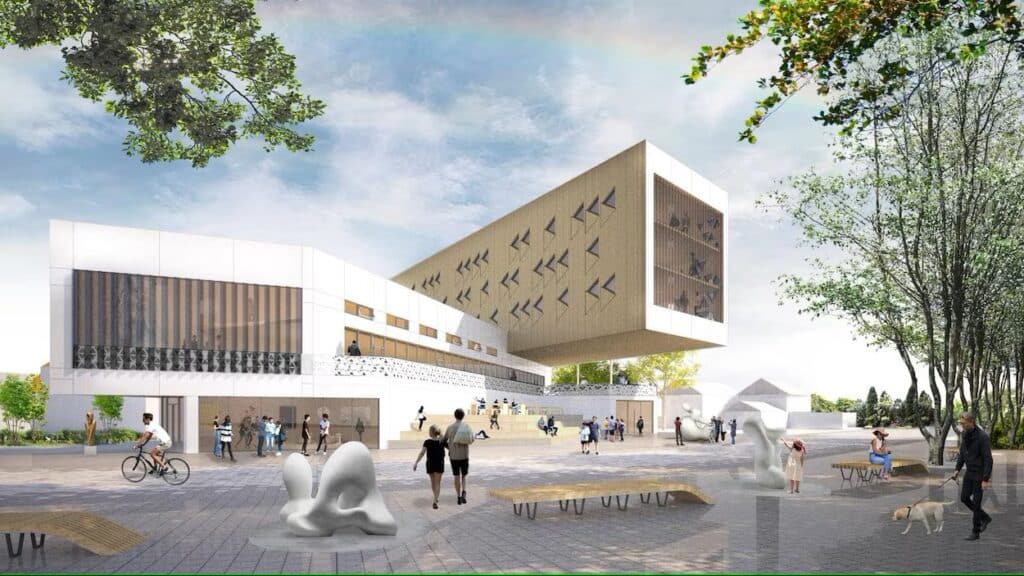
Rendering of the future building that will house the Ateliers du Ruisseau.
Speaking of the City of Gatineau, it recently announced its official support towards the Ateliers du Ruisseau project, what is the importance of such a project on the Outaouais artistic community?
It’s the most important cultural construction project for the city since we built the Maison de la culture de Gatineau over 30 years ago. It represents a major investment towards the visual arts and one of the most unique projects in Quebec and even Canada. Building such a large number of bespoke studios by and for visual artists is without precedence. The building will also be home to the Galerie Montcalm and the City of Gatineau’s permanent collection, one of the most important municipal art collections in Quebec, which bears mentioning. The fact that the cooperative will also own the building will guarantee the longevity of the project and protect the artists that will have their studios there, who are often expropriated when real estate promoters get their hands on buildings that house artist studios in other cities. The Ateliers du Ruisseau aims to create the necessary conditions to preserve our artists in the Outaouais while becoming a gathering space where visual artists, media artists and craftspeople can exchange ideas.
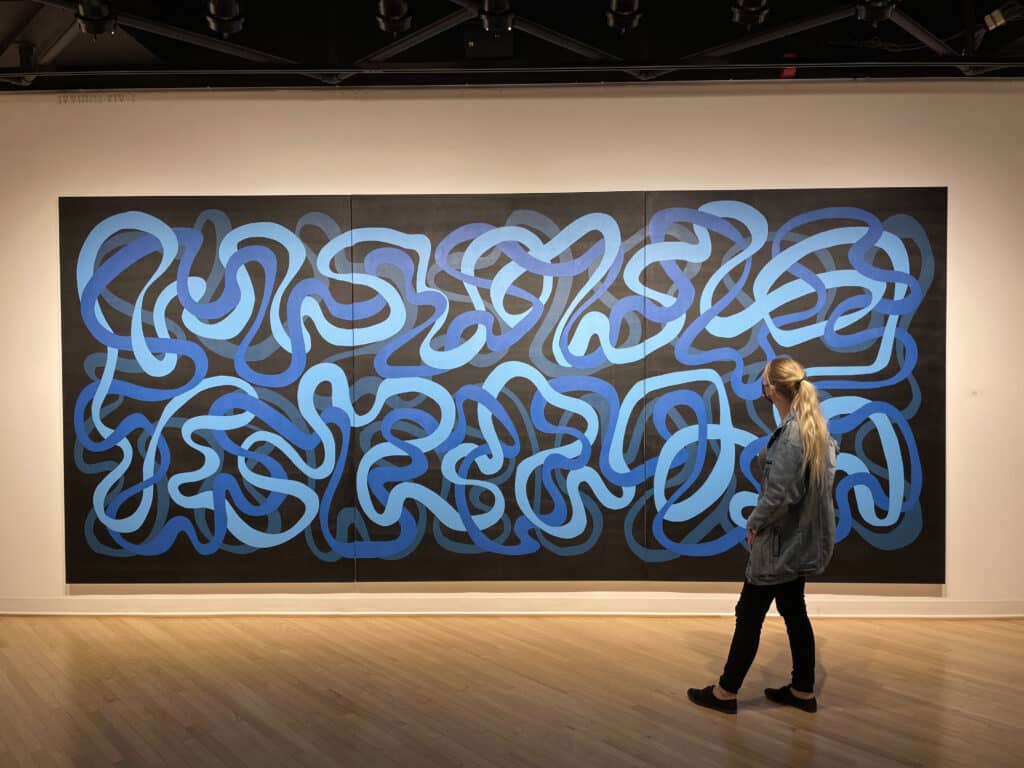
A view of the artist’s exhibition at the Galerie Montcalm. Photo: courtesy of the artist.
What is a must-see cultural event in the Outaouais this summer?
The exhibit XL presented at AXENÉO7, which ends on July 29th, is worth a visit. It’s a collective exhibit that celebrates the 40th anniversary of the artist-run centre while shining a light on the current visual arts scene in the Outaouais. Since opening in June, many activities have been organized around the exhibit, including performances, discussions, and parties, and I salute AXENÉO7 for their initiative.
One of Benjamin Rodger’s paintings is currently on view at AXENÉO7 as part of the collective exhibition XL, open until July 29th, 2023.
